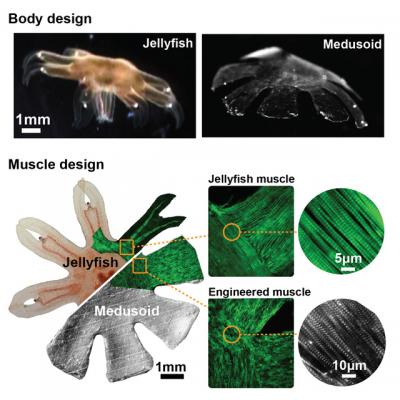Medusoid is the brainchild of professor Kevin Kit Parker and a team of researchers at the California Institute of Technology and Harvard University. Using silicone and muscle cells taken from a rat’s heart, the researchers managed to arrange the materials in such a way that they move when zapped with electricity.
“It occurred to me in 2007 that we might have failed to understand the fundamental laws of muscular pump,” said professor Kit Parker, co-author of the study. “I saw a jellyfish at the New England Aquarium, and I immediately noted both similarities and differences between how the jellyfish and the human heart pump. The similarities revealed what you need to design a bio-inspired pump.”
The movement is so realistic, that is seems that Medusoid swims like a real jellyfish — and, in fact, before the electrical current was applied, some of the muscle cells contracted a bit.
This technology could be the basis for a new type of pacemaker made with biological elements.

A comparison between a jellyfish and the silicone-based Medusoid. Image: Caltech/Janna Nawroth
Source: Harvard Science







pl
July 28, 2012
how did they engineered the muscle at such a small scale ?